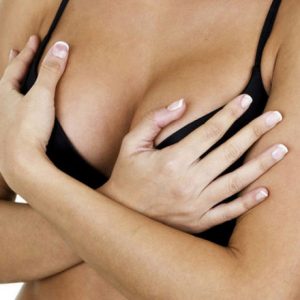Breast implants. If you have breast implants, screening is not harmful. Just let your doctor and screening centre know you have implants before a mammogram is performed.
Arranging a mammogram
BreastScreen Australia is for women who have no obvious breast symptoms.
To arrange a screening mammogram, visit BreastScreen Australia. No doctor referral is necessary.
If you are concerned about a breast lump or tenderness or any other symptoms, see your doctor as soon as you can.
If you are familiar with the way your breasts look and feel, it will make it easier to notice if any changes occur. From your 20s onwards, do the following checks once a month:
| What to do | Why | |
| First |
|
A visual check of your breasts will help you to see:
|
| Next | Feel your breasts while you are under the shower. | This is personal choice, but some women prefer to feel their breasts when they are wet and slippery as it helps them to notice any changes. |
| Then | Feel your breasts while lying down with your arm bent at the elbow and resting above your head. Stretch your hands so your palms and fingers are flat like a plate – this will allow you to feel without poking your breasts.
Make sure you feel the entire breast area from your collarbone to your tummy, and include your armpits. |
This will allow you to feel without poking your breasts. It is another helpful way to look for:
|
If you detect a new lump, don’t panic. Research shows that 9 in 10 breast lumps are not cancer.

When to see your doctor
You should see your doctor about:
- new lumps
- new lumpiness
- changes in the shape of your breast
- changes in the colour of your breast
- changes in the nipple
- discharge from your nipple
- puckering or dimpling of breast skin
- any persistent breast pain
- any persistent nipple or breast itching or rash.
Mammograms
Breast X-ray screening can show breast changes that are too small for you or your doctor to feel.
| Your age | When to have a mammogram | Other information |
|---|---|---|
| Younger than 40 years | Regular screening mammograms are not recommended. | In younger women, the breast tissue is denser and it is more difficult to differentiate between normal and abnormal breast tissue. |
| 40-49 years | BreastScreen Australia offers free screening mammograms every two years. | Reminders to have a screening may not be sent to you – it depends which state you live in. |
| 50-69 years |
|
|
| 70 years or older |
|
Whether you have a screening mammogram will depend on:
|
Some women prefer private breast screening. If you would like to find out what private services are available near you, ask your doctor.



